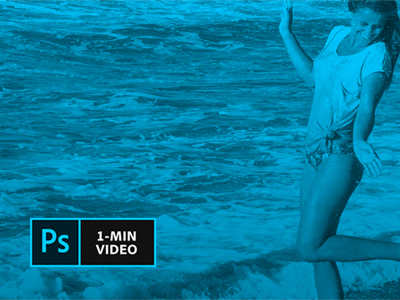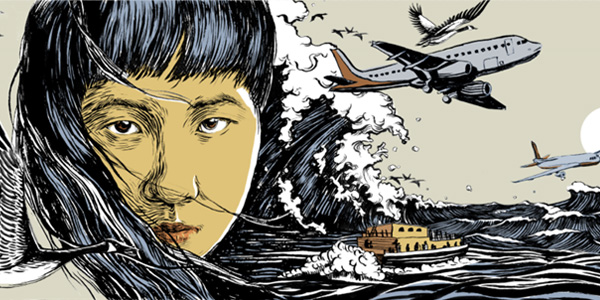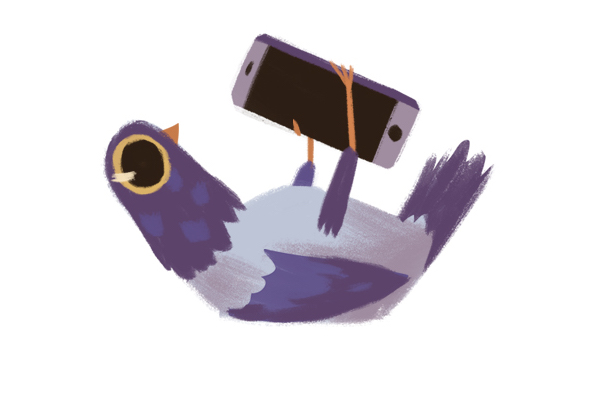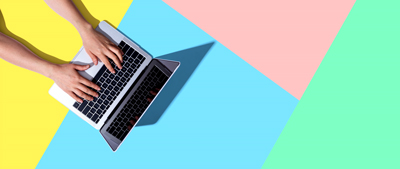I always thought that following my passion would be the sort of work that never felt difficult. But sometimes, it’s hard to crank out new creative ideas under pressure. When I got my first post-college design job, I was thrilled. Throughout high school and college, graphic design was an activity I used to fill my free time; it never felt like work to me. I threw myself into ambitious passion projects, free of any pressure to create because the only person to impress was myself. Even when I started doing freelance work, I was so eager for professional experience that the deadlines and pressure seemed exciting instead of daunting. My mindset concerning design was that it was merely a fun, artistic hobby that I could monetize from time to time. And then I decided to pursue it as my career. I started working on the digital side of a magazine out of college, and for the first time in my design career, I had the creative pressure of meeting content quotas and strict deadlines. Every company likes to mention in the job description that a role is “fast-paced,” but this was the first time I realized that the workload was fast enough to intimidate even me. I didn’t have time to make every graphic beautiful and edgy and unique. I sometimes settled for making something mediocre, turning it in, and immediately moving on to the next task. This sucked. Design, for me, had always comprised starting from scratch. Challenging myself to do things that had never been done. Taking risks, making a mess. Creating innumerable versions, iteration upon iteration. Now, there wasn’t time for that. I started to fear the deadlines because, secretly, I didn’t believe I could consistently create something that I could be proud of under the pressure. My problem was more complicated than I realized: First, I had never been forced to manage my time in a fast-paced design role. My creative process needed a full redesign! But my stress and trepidation toward the challenge overwhelmed me because I was putting a lot of pressure on myself to make every single project perfect. You might find yourself in a similar situation—whether you’ve landed your first big design gig, started a new job, or even just decided to turn your creative work into a career. Designing on a deadline is tough, but it’s not impossible. Here are a few of my best tips on how to stay creative and make it easier to do artistic work under pressure.
How to Stay Creative Under Pressure
- Remember: Just because it’s simple doesn’t mean it’s bad. It’s really common for designers to feel like everything they create has to be perfect. If you started out freelancing as a side-gig throughout school, like I did, your mindset toward creative work probably looks pretty straightforward: You get an assignment from a client, you work on it until they love it, and then your job is done. One project at a time, polished to perfection. It’s a shift in behavior and mindset to work a full-time job! When you’re cranking out 70 projects a week, they can’t all be perfect. And you can’t only work on one thing at once. One of the biggest mental barriers will be realizing that not everything you do is going to be beautiful. A lot of times, you’ll make something that’s simple and serves its purpose—and you have to realize that it’s good enough because it fulfils its function. How did I get over this mental barrier? Basically, I remind myself of two things. First, even my favorite designers don’t show everything they’ve ever done on their portfolio. So everyone has boring work samples—trust me! And second, take your ego out of design. The point of a creative project is not for you to impress people, but for a graphic to contain a certain meaning. If the file you created meets its intended purpose, then you did it! That’s all you had to do!
- Rethink your feedback. I was initially daunted by how many edits I received on my creative work. It’s easy to feel as if design tweaks are personal, especially when the work is so tied to your own style and thought process. However, I found that comments are easier to take if you boil them down to what the person is really trying to say. For example, when someone says “I think the font should be bigger,” that doesn’t mean that the font size is actually the problem. Often, it means that the text is just difficult to read—and their mind diagnosed that the font size was to blame. However, you can fix a legibility problem by changing the typeface, making the text stand out more from the background, enlarging your line spacing, or making the font bigger. In the same way, when someone says “I think you should use less color,” they might mean that the overall look is simply too busy. You can often remedy that by streamlining your design, but it doesn’t necessarily mean you have to lose all of the color. By boiling down each comment to what your editors really mean, you might find that you have a bit more flexibility in the design process—and you can learn to take comments less personally.
- Choose certain projects to go “all in.” If you have a demanding job, it might be disappointing to realize you don’t have endless time to devote to every project. However, that doesn’t mean you have to give everything the same amount of effort! One of the ways to strike a balance is to choose certain assignments that you can devote more attention to—and focus your energy on those. That doesn’t mean you completely abandon your other responsibilities, but just choose to opt for more simple designs in order to prioritize other things. By giving different amounts of time to different tasks, you’ll also keep yourself from burning out!
- Make a really cool design. And then use it—again and again. A huge time-saver in the design world? Making templates for yourself to reuse! If you’re making customized social media posts, don’t start them all from scratch. Make a template that you love and use it over and over! If you are creating graphics for a journalism publication, make an awesome layout that you can repeat with a variety of stories and images. It’s not lazy to repeat a design on multiple platforms. Often, it only makes a brand stronger to have a cohesive series of graphics.
- Draw inspiration from everywhere.
When you’re feeling burnt out or brain-dead, it can be hard to keep coming up with new creative ideas. But anything can be inspiration, especially if you are constantly keeping a collection of images and ideas that you love. Here are some ideas to get inspired!
- Start Pinterest boards—not just for the type of design that you do, but other fields as well. Being a collector of all art will open your mind to even more ideas. You never know when something will help you think of a brilliant plan!
- Take pictures of anything that catches your eye, whether it’s a color combination on a vintage tee or the silhouette of a random building.
- Start studying the design that goes into everything you see! Read books, advertisements, and magazines for their images and layout, not just the words. Focus on the animations and subtitles of TV shows. Compare the UX design of two apps you often use on your phone. When you think about it, most of our modern world was designed by someone.
- Look through your coworkers' graphics, compliment them on things that you love, and adapt some of those elements for your own work.
- Don’t compare yourself to your coworkers. Creative work isn’t like running a marathon. You can’t compare your results to other people and instantly know who’s better or worse. It’s subjective! Obviously it’s easy to think that everyone around you is better at the job. You might think that you don’t belong in your role. This feeling is so common that there’s a name for it: imposter syndrome! Sure, your coworkers have skills that you don’t have. But you have your own unique skills, too. And just by having a different brain, you have different creative ideas. So you’re worthy of being employed. Don’t let comparison convince you otherwise.
- Take time to be proud of yourself. Every now and then, look back at some of the older designs you created. Maybe you were stressed about the deadlines, had trouble coming up with a brilliant idea, and were rushed to make edits. But look what you still created! You did that! It’s important to look back on old projects. Notice how much you’ve grown, how much more efficient you’ve become, and how many new projects you’ve had the chance to work on. As a designer, you’re always evolving. It’s okay to take a moment, every now and then, to be proud of how far you’ve come.
Are you a current student? See how you can save over 60%.






